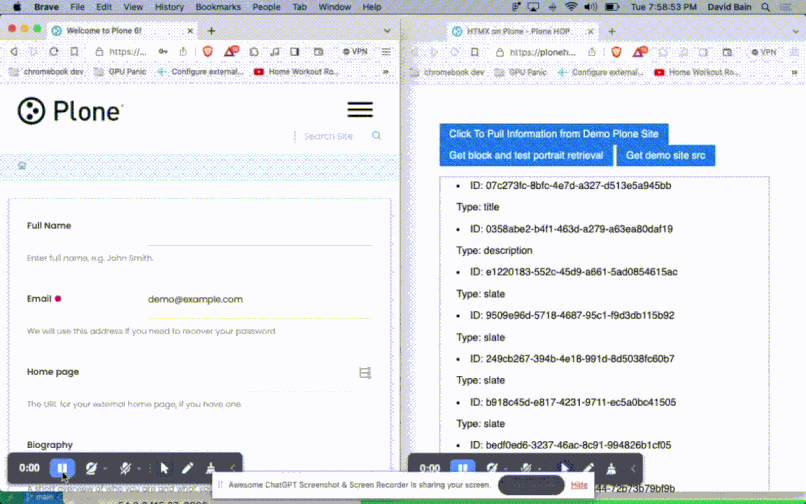My 2c: I haven't looked in-depth into htmlx to be honest. Though, we were heavily invested into Angular a long time ago and Angular shares one base design principle with htmlx, which is that you annotate HTML to execute JavaScript. This might sound like a neat idea at the beginning (like two-way binding :)). Though, you will end up learning a framework instead of learning to write proper JavaScript.
My awaken moment came when I was writing Angular 2+ components over and over again as HTML-like components and all I was doing was passing JSON structures as configuration. In any larger application, HTML-based components will become an overhead and it felt completely nuts to me at some point.
JavaScript is a reality, so my recommendation is to learn it properly from scratch without any framework. If you have to choose a framework, choose React. It is by far the most successful and widespread JS framework out there and is very close to plain JavaScript. React blew away any other framework and all the frameworks that came afterwards were heavily influenced by React (like Vue).
Even if React would die (which it won't anytime soon), you would still be able to pick up any other JS framework easily (e.g Vue is very close to React and it is relatively easy to switch I'd say). If you learn Angular or HTMLX, and in the end, you are left with nothing but useless conventions.
Of course, you can (and should) try out any new JS framework out there and toy around with it to learn. Though, when it comes to valid long-term choices I don't see a bright future for HTMLX. They made a very good marketing move by choosing the HTML name and making it look like it is a standard. Apart from that I don't see anything new.
Maybe I am missing an important point about HTMLX and I will deeply regret this comment (like the comment I made about React when it came out, you know: separations of concerns and stuff). Though I looked at the docs and stuff and I still have no clue why people are drawn to it in any way. If someone can explain to me the USP of HTMLX I'd love to hear it.
This is my personal opinion after working with most of the JS frameworks that popped up in recent years and making enough wrong framework decisions for a lifetime (at least I skipped KSS and patternslib/mockup though).
And BTW, that's just the JS framework battle side. There is more: we rewrote more than half of Plone in React in recent years and we have a sophisticated code base that will become Plone 6. This means you will have to work with React in the future if you do Plone.
Therefore, when you choose any framework other than React when working with Plone, you should have very substantial reasons for your choice. I don't see that killer reason for HTMLX tbh.
Regarding the learning curve: I trained people in Plone, Python, Angular 1, Angular 2+, React and Volto. I managed large teams of developers with different backgrounds in those languages and frameworks. React and Volto are a lot easier to pick up than anything we are used to in Plone. Yes, you have to give up the way you write HTML (this is why Vue and HTMLX and others still have traction).
Though, we can train people from zero (school) to become Plone 6 frontend devs in less than six months (meaning they do Plone projects on their own). That would be impossible with Plone Classic or any Plone-based technology.
You are a very smart guy Gotcha, trust me, you can learn React within a week (and it will be worth it). 


